Anthrax always sounds like something out of a thriller, but the risk is real enough that doctors have a game plan, with levofloxacin sitting near the top of the list. Whether it’s a natural outbreak or some lunatic with a homemade letter, fast response is everything—and antibiotics like levofloxacin save lives when every hour counts.
Anthrax isn’t just a problem for farmers and lab workers. If you live anywhere near livestock, or even visit places where anthrax spores lurk in soil, you could be at risk. Happens more often than you might think, especially in parts of the world where animal vaccination is skipped. And yes, levofloxacin works for all the major nasty forms: inhaled, swallowed, or snuck in through a cut.
So, what’s levofloxacin’s superpower? It messes with the DNA inside bacteria, basically shutting the whole operation down. That’s why it’s one of the go-to meds if you ever get a warning about anthrax exposure. Thing to remember—timing is everything. Don’t wait for symptoms. The earlier you start, the better your odds.
- Understanding Anthrax and Its Risks
- How Levofloxacin Works Against Anthrax
- Prevention: Taking Levofloxacin After Exposure
- Treating Anthrax with Levofloxacin
- Tips, Side Effects, and Practical Advice
Understanding Anthrax and Its Risks
If you’ve ever heard about mail scares or animal outbreaks, you know anthrax isn’t just some mythical danger. It’s caused by a tough-as-nails bacteria called Bacillus anthracis. This thing forms spores that can hang in soil for decades, waiting for a chance to get inside a person or animal.
Anthrax comes in three main flavors: cutaneous (skin), inhalation (lungs), and gastrointestinal (digestive tract). The skin version is the most common. Usually, it breaks out in folks handling infected animals or animal products. If the spores get airborne and you breathe them in, that’s where things get seriously dangerous. Inhalation anthrax is deadly if it goes untreated. Eating meat from an infected animal? That’s how you can end up with gastrointestinal anthrax, which isn’t a picnic either.
Who’s most at risk? Surprisingly, it’s not just farmers and ranchers. Lab workers, mail handlers, military members, and even travelers to places where anthrax pops up in animals can run into trouble. That’s why anthrax prevention is on the radar for public health folks, especially when thinking about bioterrorism risks.
| Type of Anthrax | Main Route | Untreated Fatality Rate |
|---|---|---|
| Cutaneous | Skin exposure | Up to 20% |
| Inhalation | Breathing in spores | 45-85% |
| Gastrointestinal | Eating contaminated meat | 25-60% |
Here’s another not-so-fun fact: you don’t always see symptoms right away. With inhalation anthrax, you might feel fluish for a few days, then suddenly get much worse. That’s why levofloxacin and other antibiotics need to get started ASAP—sometimes even before diagnosis is confirmed, if exposure is suspected.
It’s not something you can catch from another person directly—anthrax doesn’t work that way. But the bacteria’s ability to survive harsh conditions and its use in past bioterror attacks make it a bug that hospitals and health departments keep tabs on. Fast preventive action, plus strong antibiotics like levofloxacin, make a real difference in keeping things under control.
How Levofloxacin Works Against Anthrax
Here’s the deal: levofloxacin is a powerful antibiotic that blocks the anthrax bacteria from doing its job. More specifically, it messes with the DNA replication machinery inside the Bacillus anthracis bacteria. No DNA replication, no growth, no more multiplying anthrax bugs in your system. That’s why it’s such a heavy hitter, especially when you need to stop a bad infection in its tracks.
Doctors like using levofloxacin for anthrax because it’s a broad-spectrum antibiotic, meaning it works not just on anthrax, but a bunch of other bacteria too. In cases where the cause isn’t immediately clear, this is a huge plus. The drug belongs to a group called fluoroquinolones—think of these as the special ops team of antibiotics.
Timing matters a lot. If you start levofloxacin within 24 to 48 hours of exposure to anthrax spores, you have a much better shot at stopping the infection before it starts. It’s also a top choice if someone can’t take penicillin or doxycycline due to allergies or resistance. The Centers for Disease Control and Prevention (CDC) lists it right alongside those two as an approved treatment for anthrax exposure.
Check out how it stacks up against other big-name antibiotics for anthrax:
| Antibiotic | When Used for Anthrax | Main Benefits |
|---|---|---|
| Levofloxacin | Prevention & Treatment | Broad-spectrum, good for allergies |
| Doxycycline | Prevention & Treatment | Long track record, affordable |
| Ciprofloxacin | Prevention & Treatment | Well-studied, quick acting |
When you swallow a dose, levofloxacin is absorbed fast and spreads through your bloodstream, getting into tissues where anthrax spores might be hiding. It’s also available in both pill and IV form, so hospitals have options depending on how sick someone is or how fast the drug needs to work.
If you’re ever in a situation where anthrax exposure is even a possibility and your doctor recommends levofloxacin, don’t hesitate. The science backs it up—it works, and fast action is your best friend.
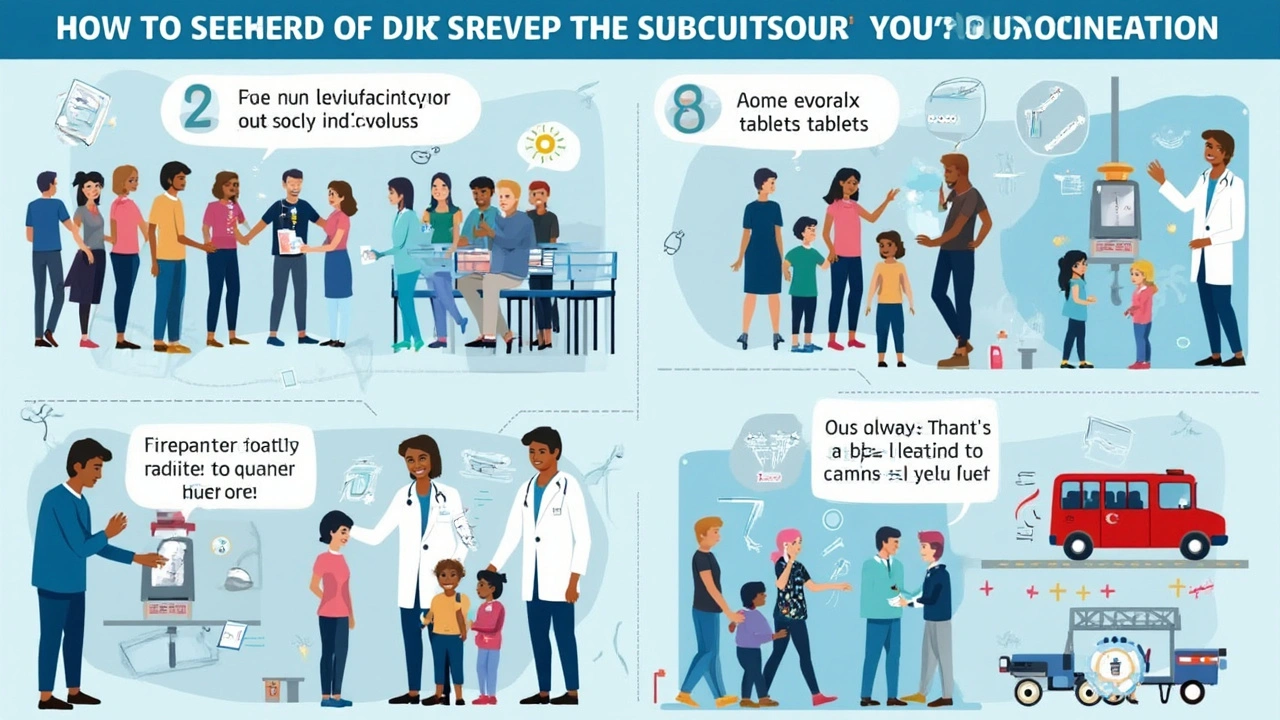
Prevention: Taking Levofloxacin After Exposure
Caught in a situation where anthrax exposure is possible? Acting fast with levofloxacin might be the game-changer. This antibiotic isn’t just for those already sick—it’s front-line defense for people who’ve been exposed but aren’t showing symptoms yet. The CDC recommends starting levofloxacin within 24 hours of a confirmed or strongly suspected exposure to anthrax spores. The sooner you begin, the better your shot at avoiding serious illness.
Here’s how the usual prevention routine goes for healthy adults:
- Standard adult dose: 500 mg of levofloxacin taken once a day by mouth.
- Keep at it for 60 days. Anthrax spores can lurk in your body and kick in weeks later, so don’t quit early.
- If you can’t swallow pills, the antibiotic can also be given by IV in the hospital if needed.
Sometimes, health officials tag team levofloxacin with the anthrax vaccine, especially if the threat is ongoing or massive. But the antibiotic works on its own as well—it’s especially important for folks who can’t get the vaccine or are allergic.
Kids, pregnant women, and people with kidney problems might need a different dose or extra monitoring. Doctors determine the safest plan for them individually. Don’t guess the dosage or stop early just because you feel fine. Anthrax spores can be slow to activate, so the whole 60-day course matters.
Some quick tips for sticking to the plan:
- Take levofloxacin at the same time every day to keep levels steady.
- Don’t mix it with dairy or antacids—those mess with how well your body absorbs the medicine.
- Watch for any weird side effects and tell your doctor right away. Upset stomach and muscle aches are possible, but serious reactions are rare when used as directed.
Here’s a quick look at dosing details for adults:
| Who | Dose | Duration |
|---|---|---|
| Healthy adults | 500 mg once daily | 60 days |
| Kids/pregnant/renal issues | Adjusted by doctor | 60 days |
Bottom line: Don’t wait. If you’re told you might have been exposed to anthrax, jump on levofloxacin as recommended and finish the course. It’s your best bet at dodging trouble before it even starts.
Treating Anthrax with Levofloxacin
When it comes to anthrax treatment, levofloxacin is up front for a reason. Doctors trust it because it’s been proven to slam the brakes on the bacteria behind anthrax, called Bacillus anthracis. Here’s how it usually plays out.
If someone starts showing symptoms—fever, bad cough, chest pain, swollen lymph nodes—there’s no waiting around. Treatment starts ASAP. Adults with confirmed or suspected anthrax often get 500 mg of levofloxacin by mouth once a day, or through an IV if they’re really ill. Kids get a dose based on their weight, so the pharmacy team gets involved to make sure it’s just right.
And don’t count on a quick fix. Treatment can last 60 days, especially for inhaled anthrax, because the spores can hide out in your body for weeks before popping up. Stopping early lets the infection sneak back in. Here’s a quick look at how the regimen usually stacks up:
| Patient | Levofloxacin Dose | Duration |
|---|---|---|
| Adults | 500 mg daily (oral/IV) | 60 days |
| Children | Weight-based | 60 days |
Taking the pills with food can help dodge stomach issues. Another tip: Don’t mix your levofloxacin with dairy at the same time—calcium can mess with how your body soaks up the drug. Space it out by a couple of hours if you love milk or yogurt.
Notice something off—like aches, diarrhea, weird mood swings, or tendon pain? Tell your doctor. Most folks handle levofloxacin just fine, but catching side effects early is better than toughing it out.
One last thing: antibiotics aren’t solo heroes. If breathing gets tough or symptoms get worse fast, doctors might add more treatments, like antitoxins or hospital care. The earlier the treatment kicks in, the less likely things spiral out of control.

Tips, Side Effects, and Practical Advice
If you ever need to take levofloxacin for anthrax, you want to do it right. Here are some quick tips to help you get the most out of this antibiotic and keep hassles to a minimum:
- Stick to the schedule: Missing doses makes levofloxacin less effective. Set phone alarms if you have to.
- Take with water: Down your pills with a full glass, and if it makes your stomach upset, you can take it with food.
- Avoid dairy: Milk, cheese, and even antacids mess with how your body absorbs the drug. Leave a two-hour gap if you need both.
- Watch for interactions: Levofloxacin can clash with blood thinners, diabetes meds, and steroids. Always tell your doctor what else you’re taking.
Like most antibiotics, side effects can pop up. Some are mild, but others mean you should drop what you’re doing and call a doctor.
- Common issues: Nausea, diarrhea, headache, and trouble sleeping are typical. Most folks plug through just fine.
- Serious but rare: Achilles tendon pain or torn tendons (your ankles might suddenly hurt or pop), nerve tingling, or mental changes like confusion. Kids, older adults, and people on steroids are more at risk here.
- Sunburn alert: Levofloxacin makes you more likely to burn, so grab some sunscreen or cover up if you’re outside for long.
If you’re exposed to anthrax and get a prescription for levofloxacin, expect to be on it for 60 days. That’s a long haul, but the bacteria can hang around in your body, so don’t quit early—even if you feel totally fine.
| Side Effect | How Often? |
|---|---|
| Nausea | Up to 8% |
| Rash | About 2% |
| Tendon problems | Less than 1% |
To sum it up: use levofloxacin exactly as directed, pay attention to your body, and don’t power through anything weird—get help. Fast action matters, whether you’re preventing or treating anthrax.
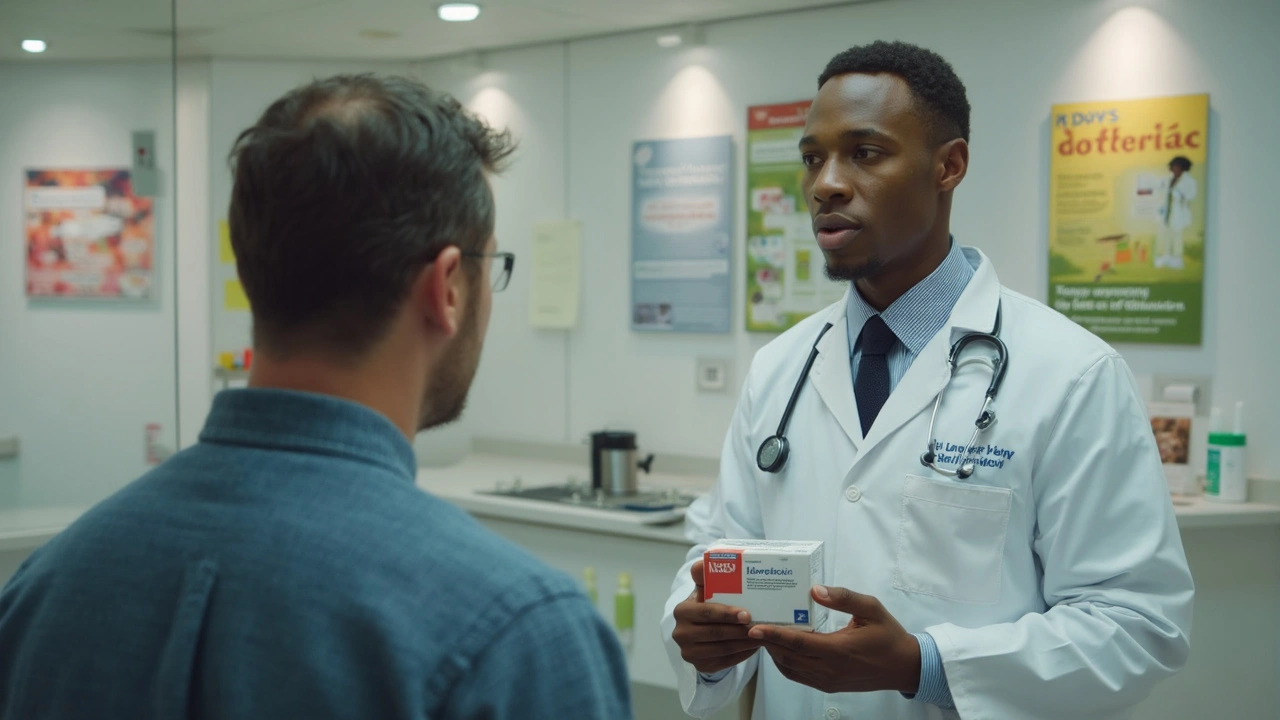
 Massage Therapy for Edema: Reduce Swelling & Boost Circulation
Massage Therapy for Edema: Reduce Swelling & Boost Circulation
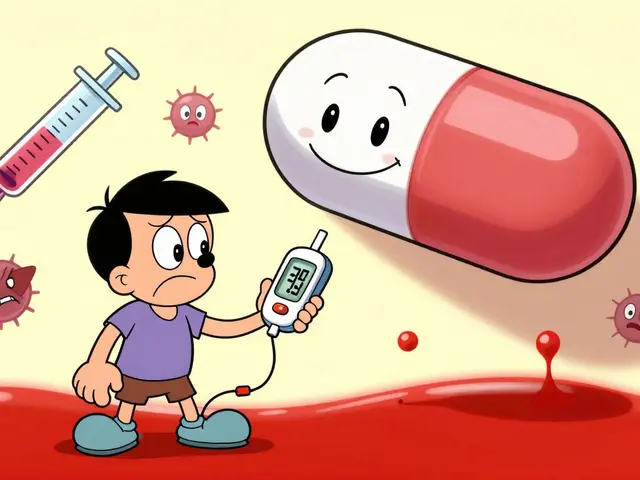 Corticosteroid-Induced Hyperglycemia and Diabetes: How to Monitor and Manage It
Corticosteroid-Induced Hyperglycemia and Diabetes: How to Monitor and Manage It
 Cerebral Aneurysm: Understanding Rupture Risk and Modern Treatment Options
Cerebral Aneurysm: Understanding Rupture Risk and Modern Treatment Options
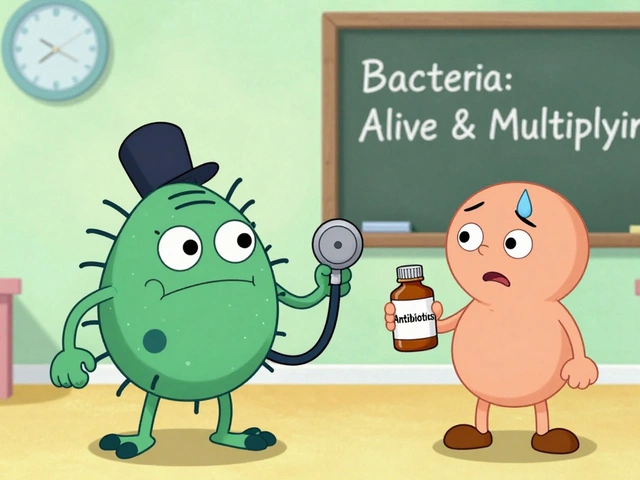 Bacterial vs. Viral Infections: What Sets Them Apart and How They're Treated
Bacterial vs. Viral Infections: What Sets Them Apart and How They're Treated
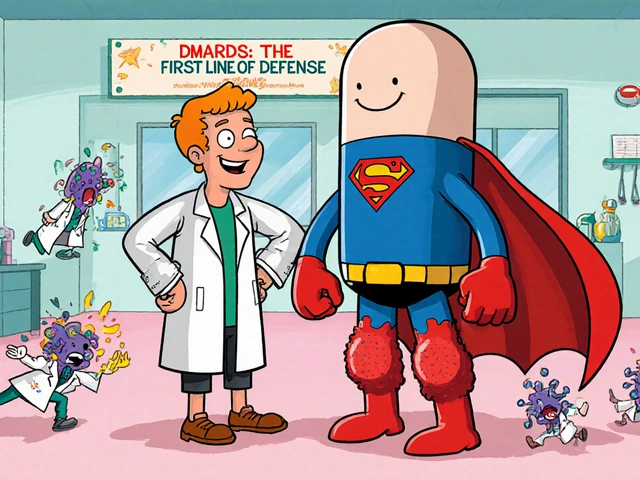 Rheumatoid Arthritis Medications: How DMARDs and Biologics Interact in Treatment
Rheumatoid Arthritis Medications: How DMARDs and Biologics Interact in Treatment
Noah Cokelaere
July 18, 2025 AT 02:30So, levofloxacin is the go-to for anthrax? Honestly, I always thought anthrax was some ancient microscopic horror we don’t really have to worry about in everyday life. But it’s wild how this antibiotic plays defense and offense both. Has anyone here had real experience with it, like during an outbreak or something?
Also, side effects—do they seriously happen often or are they just the usual “might feel a bit nauseous” kind of warnings? I mean, if I’m exposed, I’d want to know if taking levofloxacin is going to mess with me hard or if it’s pretty chill.
And the comparison with other antibiotics got me curious. Is levofloxacin really the best or just the most conveniently available? Asked because I’d assume doctors prefer whatever’s got the least resistance buildup.
Ashley Helton
July 19, 2025 AT 06:17Haha, your curiosity is on point! I was expecting some sci-fi style apocalypse and turns out it’s just antibiotics doing their badass thing as usual.
From what I read, levofloxacin is pretty reliable but it’s not without its quirks. Common side effects do include nausea, dizziness, and sometimes pretty gnarly tendon pain, which is kinda scary if you think about it.
Doctors definitely weigh risks vs. benefits, tbh. It's all about using it quickly and correctly during an exposure to anthrax. They don't want to overload patients with antibiotics unless they really need to.
Still, in terms of 'best,' I've heard a few docs say it's preferred because it has a broad spectrum and good tissue penetration. But yeah, resistance is always lurking in the background with antibiotics.
Brian Jones
July 20, 2025 AT 10:03Okay... let me just break this down a bit for y’all because the whole anthrax/levofloxacin combo is, frankly, a fascinating case study in how medicine tries not to panic but still be ready as heck.
Anthrax spores can be super hardy and unpredictable, so levofloxacin's action against them isn't just about killing bacteria. It's about inhibiting DNA gyrase, which is a fancy way of saying it messes with how these bacteria replicate. Literally stopping them from throwing a party inside your body.
But you want to tread lightly. These antibiotics can cause some serious side effects, especially with extended use – think tendon ruptures, nerve issues, even QT prolongation on your heart rhythm. So doctors gotta balance urgency with caution... like tightrope walking while juggling flaming torches.
Also, is levofloxacin the only hero? Nah. There are alternatives like doxycycline, but levofloxacin shines due to fewer injections and easier once-daily dosing during outbreaks, making logistics a heck of a lot easier.
TL;DR: It's effective but no walk in the park, and definitely requires expert supervision.
Carlise Pretorius
July 22, 2025 AT 17:37Yoh, this stuff is wild. I never realized how serious dealing with anthrax is and how much thought goes into using meds like levofloxacin.
Also cool to learn how docs gotta watch out for those side effects real careful cos you dont wanna swap one problem for another if you can help it.
What about people in places where these meds aint easy to get? Does the article talk about what they do? I guess being prepared means knowing alternatives but not sure how that plays out everywhere.
Hopefully more info gets out there cos this is the kinda stuff everyone should kinda know, you know?
Johnson Elijah
July 25, 2025 AT 01:10👍 Great thread here, guys! Sharing some ☀️ positive vibes ✨ and insight ☝️ on this topic from my experience.
Levofloxacin's versatility is 🔑 when facing anthrax outbreaks, especially in diverse communities where access and compliance can be tricky. This antibiotic offers a practical approach that works across different populations, making it a real game changer. 🌍
That said, staying open-minded about patient-specific factors is crucial 🤔—age, underlying health, and exposure level influence treatment plans significantly. Doctors gotta keep that holistic perspective strong.
Also, I love how this medication balances efficacy & ease of use, leading to better adherence during stressful situations like outbreaks. 💪 Let's keep promoting awareness and preparedness without causing alarm.
Stay safe out there, folks! 🌟
Roxanne Lemire
July 27, 2025 AT 08:43this article def got me thinking about the big picture on how we handle biothreats. levofloxacin is just one piece in a complex puzzle and no drug’s perfect, yeah?
when you consider antibiotic resistance and the risk of side effects, plus access issues some ppl face, it’s a bit overwhelming. but learning what docs actually do with these meds in real outbreaks helps me feel less anxious.
i wish there was more public education about the symptoms of anthrax too because knowing early signs could be a lifesaver. prevention combined with timely antibiotic use = the best strategy imho.
Alex Mitchell
July 29, 2025 AT 16:17I appreciate the balance here—levofloxacin is powerful but requires respect and proper medical guidance. 👍 This article’s no-nonsense approach helps cut through the hype that often surrounds anthrax info online.
Speaking as someone who’s seen how misinformation can spread, setting realistic expectations is key: yes, it’s effective, but it’s not some magic bullet without downsides.
Also, just a heads up to those curious—always follow your healthcare provider’s instructions about dosage and duration, even if you start feeling better. Stopping early can be really risky.
And if you experience anything unusual like severe tendon pain or weird heart rhythms, get immediate medical attention, no questions asked.
Narayan Iyer
July 31, 2025 AT 23:50The microbiological mechanisms here are fascinating! Levofloxacin belongs to the fluoroquinolone class, acting by inhibiting bacterial enzymes critical for DNA replication—DNA gyrase and topoisomerase IV. This kind of action makes it effective against both vegetative and spore-forming bacillus anthracis cells.
It merits attention that resistance patterns and pharmacokinetic profiles dictate the choice of antibiotic during an outbreak scenario. Levofloxacin's favorable penetration into lung tissues justifies its frontline status against inhalational anthrax.
However, prudence is warranted given the well-documented risk of adverse reactions, including QT interval prolongation and tendinopathies. The risk-benefit assessment must always be individualized.
Overall, a nuanced approach informed by current epidemiological data ensures optimal outcomes in anthrax treatment protocols. The article's emphasis on real-world application is crucial for bridging theory and practice.
Amanda Jennings
August 3, 2025 AT 07:23This really makes me appreciate all the work that goes into developing and deploying antibiotics for rare but deadly infections. The way levofloxacin fits into anthrax treatment protocols shows how medicine evolves to meet threats, whether old or new.
Also, the fact that doctors have guidelines to balance the benefits and side effects makes me feel confident that we're not throwing pills blindly when exposed to dangerous germs.
I wonder though — how fast do they usually start treatment after exposure? Like, is it hours, days, or what?
alex cristobal roque
August 5, 2025 AT 14:57Glad to see this topic getting some attention. As someone who spends a lot of time explaining antibiotic stewardship, I think the key takeaway is that levofloxacin is critical but must be used judiciously.
The risk of side effects like tendon rupture or neurotoxicity, though rare, means it’s not for casual use. Proper dosing schedules during anthrax exposure need to be followed closely.
Doctors typically recommend prophylactic treatment for 60 days post-exposure due to the persistence of anthrax spores, which is quite a long time for any antibiotic. This extended regimen underscores why patient education and compliance are so important.
The article's “dos and don’ts” offer solid practical guidance that really helps bridge the gap between clinical knowledge and patient understanding.
Bridget Dunning
August 7, 2025 AT 22:30A thoroughly comprehensive article indeed—elevating public understanding of such a specialized subject is commendable. Levofloxacin's role in both prophylactic and therapeutic contexts for anthrax reaffirms the sophistication of modern antimicrobial strategies.
Moreover, the exposition on side effect profiles highlights the necessity of precision medicine tailored to individual patient contexts.
Ethically, the balance between accessibility and safety is paramount, especially in emergencies where mass prophylaxis might be warranted.
It would be beneficial if future updates include comparative efficacy data for alternative agents in diverse demographic cohorts to further enrich the discourse.